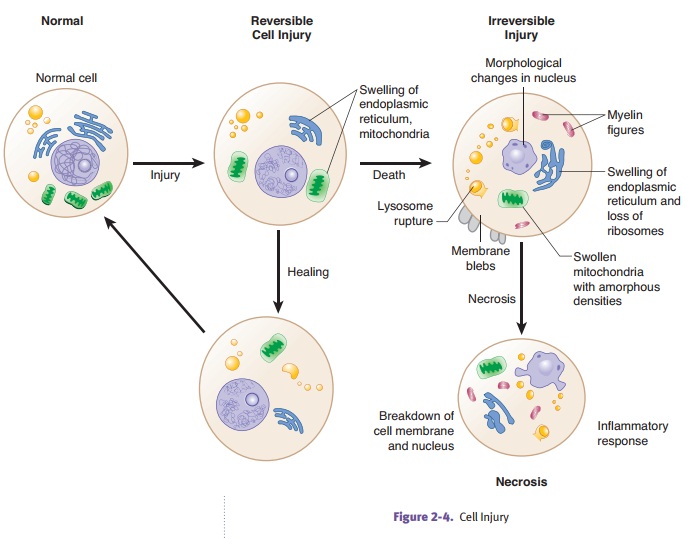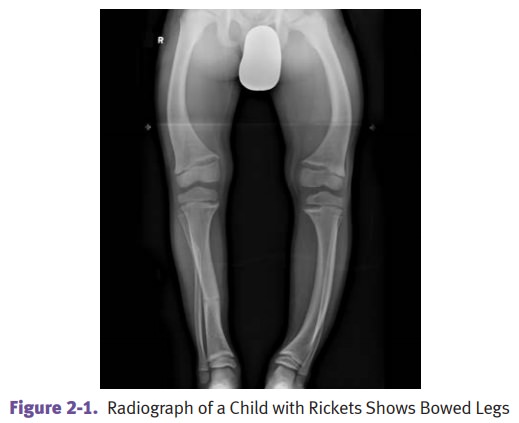Chapter: Pathology: Cellular Injury and Adaptation
Causes of Cellular Injury

CAUSES OF CELLULAR INJURY
Hypoxia is
the most common cause of injury; it occurs when lack of oxygen preventsthe cell
from synthesizing sufficient ATP by aerobic oxidation. Major mechanisms leading
to hypoxia are ischemia, cardiopulmonary failure, and decreased oxygen-carrying
capacity of the blood (e.g., anemia). Ischemia,
due to a loss of blood supply, is the most common cause of hypoxia, and is
typically related to decreased arterial flow or decreased venous outflow (e.g.,
atherosclerosis, thrombus, thromboembolus).
Pathogens
(viruses, bacteria, parasites, fungi, and prions) can injure
the body bydirect infection of cells, production of toxins, or host
inflammatory response.
Immunologic
dysfunction includes hypersensitivity reactions and autoimmune diseases.
Congenital
disorders are inherited genetic mutations (e.g., inborn errors of
metabolism).
Chemical
injury can occur with drugs, poisons (cyanide, arsenic, mercury,
etc.), pol-lution, occupational exposure (CCl4,
asbestos, carbon monoxide, etc.), and social/ lifestyle choices (alcohol,
smoking, IV drug abuse, etc.)
Physical
forms of injury include trauma (blunt/penetrating/crush injuries,
gunshotwounds, etc.), burns, frostbite, radiation, and pressure changes.
Nutritional or vitamin imbalance
·
Inadequate calorie/protein intake can
cause marasmus (decrease in totalcaloric intake), and kwashiorkor (decrease in
total protein intake).
·
Excess caloric intake can cause
obesity (second leading cause of prematurepreventable death in the United
States) and atherosclerosis.
·
Vitamin deficiencies can be
seen with vitamin A (night blindness, squamousmetaplasia, immune deficiency),
vitamin C (scurvy), vitamin D (rickets and osteomalacia), vitamin K (bleeding
diathesis), vitamin B12 (megaloblastic ane-mia, neuropathy, and spinal cord
degeneration), folate (megaloblastic anemia and neural tube defects), and
niacin (pellagra [diarrhea, dermatitis, and dementia]).
·
Hypervitaminosis is less
commonly a problem but can result in tissue specificabnormalities.

Related Topics